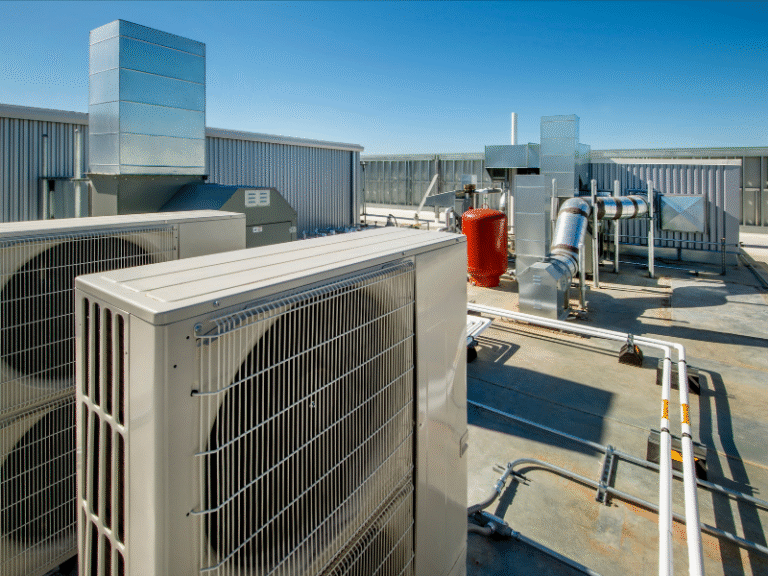When choosing an HVAC (Heating, Ventilation, and Air Conditioning) system for your home or office, the local climate zone plays a significant role in determining how well your system performs. Whether you’re living in a hot and humid coastal area or a dry, arid desert region, understanding the impact of climate zones on HVAC sizing and performance is crucial for optimal energy efficiency, comfort, and cost-effectiveness.
In this blog post, we’ll explore the relationship between climate zones and HVAC performance, how different climates affect the cooling and heating requirements, and why proper system sizing tailored to your climate zone is essential for maintaining efficiency and comfort.
What Are Climate Zones and Why Do They Matter?
Climate zones are regions that share similar climate conditions, including temperature, humidity, and seasonal variations. These zones directly influence the amount of heating or cooling required to maintain comfort in indoor spaces. The U.S. Department of Energy (DOE) divides climate zones into several categories based on regional differences in temperature, humidity, and weather patterns.
- Hot and Humid Zones: These areas experience high temperatures with high humidity levels year-round, such as parts of Florida, Louisiana, and tropical regions.
- Hot and Dry Zones: These areas experience high temperatures but low humidity levels, including deserts and certain inland regions.
- Cold Zones: These regions are characterized by cold winters, requiring heating systems to maintain comfort during colder months, such as northern states or mountainous areas.
- Temperate Zones: These areas experience moderate seasonal changes, with cooler winters and warmer summers, like much of the Pacific Northwest.
Understanding the climate zone you live in helps you make informed decisions when selecting an HVAC system, ensuring it’s adequately sized and optimized for the local weather conditions.
How Climate Zones Affect HVAC Sizing
Your HVAC system’s primary purpose is to maintain a comfortable indoor temperature by cooling or heating the air. However, each climate zone requires different considerations for system sizing due to the varying demands for cooling or heating. Here’s how climate zones impact HVAC system sizing:
1. Hot and Humid Zones
In hot and humid regions, air conditioning systems are used primarily to cool the air and control humidity. High humidity levels add extra moisture to the air, which can make the indoor environment feel warmer and more uncomfortable. This means your HVAC system needs to work harder to both cool the air and remove moisture.
- Impact on Sizing: These regions require larger cooling capacities to handle the combined demand of temperature control and humidity management.
- Energy Efficiency: Proper cooling load calculations are vital to ensure that the system is efficient. Over-sizing the system may lead to short cycling, where the unit constantly turns on and off, wasting energy and failing to remove enough moisture from the air.
2. Hot and Dry Zones
In areas with hot and dry climates, such as deserts, air conditioning is primarily used for cooling, but humidity control isn’t as critical. However, the extreme heat can push the cooling system to its limits, especially during peak summer months.
- Impact on Sizing: While smaller systems may suffice compared to humid climates, they must still be powerful enough to handle extreme temperatures. In these regions, evaporative cooling systems or swamp coolers may also be effective, which are designed to cool the air without the need for extensive humidity control.
- Energy Efficiency: These systems may have a higher SEER (Seasonal Energy Efficiency Ratio) rating, as they need to be energy-efficient to handle long, hot summers without overconsumption.
3. Cold Zones
In colder climates, HVAC systems are mainly used for heating, especially during the long winter months. The system needs to be able to effectively warm the indoor space while maintaining energy efficiency.
- Impact on Sizing: In cold zones, the HVAC system will need to be larger for heating than in temperate or hot climates. In some areas, a dual system of both heating and cooling may be needed, especially if summers are warm.
- Energy Efficiency: Heat pumps are commonly used in these areas, providing both heating and cooling with excellent energy efficiency, especially in regions with moderate winter temperatures. However, in extremely cold climates, furnaces or electric heating may be necessary to meet the higher heating demands.
4. Temperate Zones
Temperate zones experience moderate seasonal changes, where heating is required during colder months, and air conditioning is used during hot summers. Here, the demand for both heating and cooling is balanced, making it easier to size HVAC systems.
- Impact on Sizing: HVAC systems in temperate zones can often be smaller and more energy-efficient than in extreme hot or cold regions, as the temperature demands are more balanced.
- Energy Efficiency: Systems with a moderate SEER rating and AFUE (Annual Fuel Utilization Efficiency) are typically sufficient to meet the needs of these climates, providing efficient heating in winter and cooling in summer without excessive energy consumption.
The Importance of Proper System Sizing for Your Climate Zone
Selecting the right-sized HVAC system is crucial for maintaining energy efficiency, comfort, and cost-effectiveness. Here’s why:
- Over-Sizing: An over-sized system will lead to frequent cycling, where the HVAC unit turns on and off rapidly, wasting energy and failing to adequately control humidity. In hot and humid zones, over-sized systems will also struggle with moisture removal, making the space feel uncomfortable.
- Under-Sizing: An under-sized system in hot or cold climates may struggle to maintain the desired indoor temperature, leading to poor performance, discomfort, and increased energy costs as the system works overtime.
Accurate cooling load calculations, which factor in local climate data, are key to ensuring that your HVAC system is properly sized. This ensures that the system can meet the cooling or heating demands of your building while maintaining energy efficiency.
How CoolCalc Can Help You Choose the Right HVAC System
At CoolCalc, we understand the importance of accurate cooling load calculations based on your local climate. Our app simplifies the process by providing accurate and reliable HVAC sizing recommendations tailored to your specific location in Nigeria.
CoolCalc offers:
- Real-Time Weather Data: Access localized weather data for all 36 Nigerian states to help ensure your HVAC system is correctly sized for your region’s climate.
- Efficient System Sizing: With precise calculations, you can avoid the pitfalls of over-sizing or under-sizing, saving energy and money in the long run.
- User-Friendly Interface: CoolCalc is designed for both professionals and beginners, making it easy to quickly get the right-sized system for your space.
Conclusion
Understanding how climate zones affect HVAC sizing and performance is essential for choosing the right system for your home or office. Whether you live in a hot and humid area, a cold zone, or a temperate climate, the right HVAC system will keep you comfortable while also saving you energy and money.
By factoring in local climate conditions and using tools like CoolCalc to perform accurate cooling load calculations, you can ensure your HVAC system is perfectly sized and optimized for the demands of your specific climate zone. Proper system sizing not only maximizes comfort but also reduces your carbon footprint and lowers long-term costs.




